Common name: horse chestnut
Scientific name: Aesculus hippocastanum
Family: Hippocastanaceae
Origin: non-native
Spiky cases, gleaming seeds, celebrated by children. Horse chestnuts, with their mahogany-bright conkers, are the very essence of autumn.
Common name: horse chestnut
Scientific name: Aesculus hippocastanum
Family: Hippocastanaceae
Origin: non-native
Mature horse chestnut trees grow to a height of around 40m and can live for up to 300 years. The bark is smooth and pinky-grey when young, which darkens and develops scaly plates with age. Twigs are hairless and stout; buds are oval, dark red, shiny and sticky.
Look out for: conkers (seeds) which are surrounded by a spiky green case. Distinctive large leaves have serrated leaflets.
Identified in winter by: twigs which have large, sticky red buds.
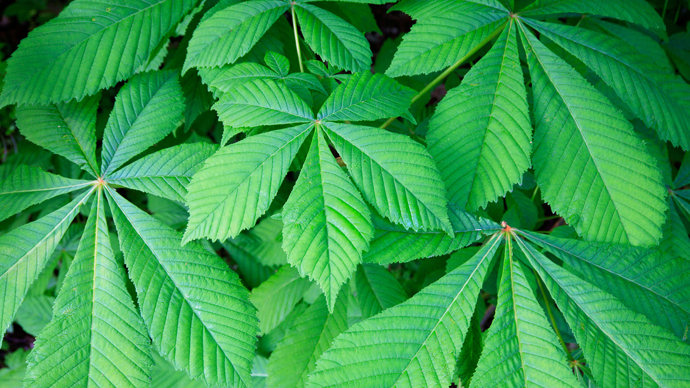
Credit: Christine Whitehead / Alamy Stock Photo
The palmate leaves comprise 5–7 pointed, toothed leaflets spreading from a central stem.
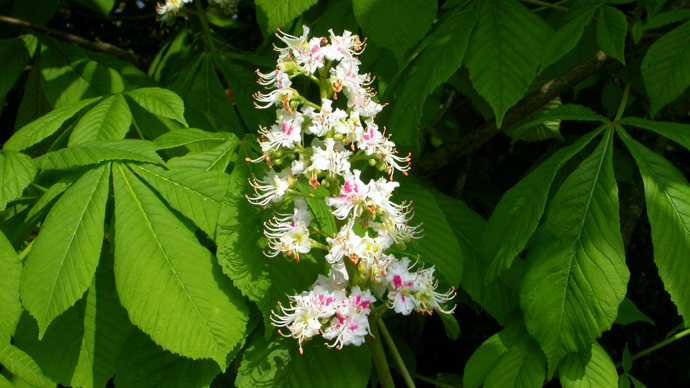
Credit: Christine Martin / WTML
Appearing in May, individual flowers have 4–5 fringed petals, which are white with a pink flush at the base.
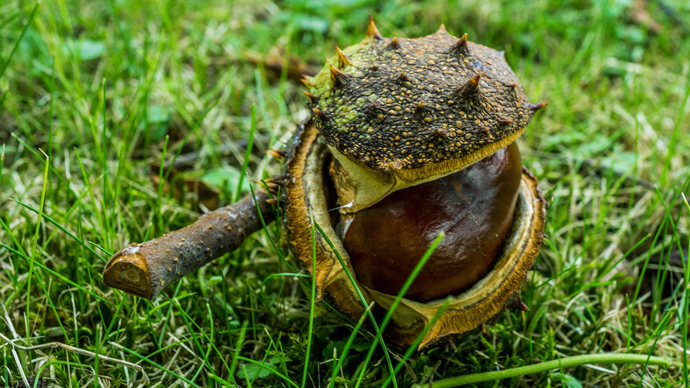
Credit: Ben Lee / WTML
Once pollinated by insects, each flower develops into a glossy red-brown conker inside a spiky green husk, which falls in autumn.
Horse chestnut is native to the Balkan Peninsula. It was first introduced to the UK from Turkey in the late 16th century and widely planted. Though rarely found in woodland, it is a common sight in parks, gardens, streets and on village greens.
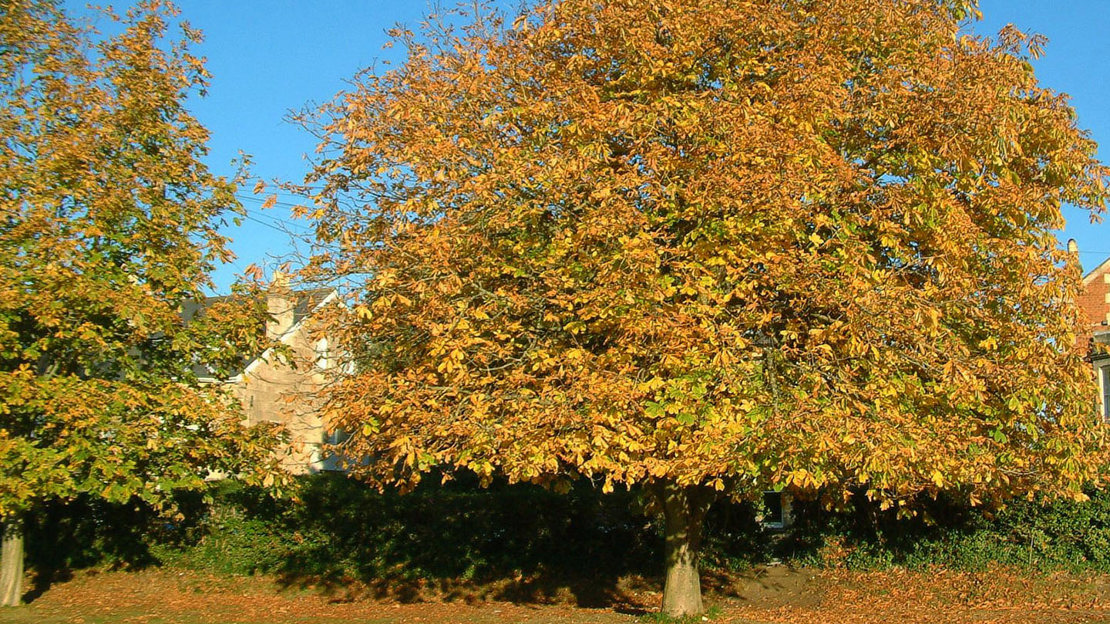
The flowers provide a rich source of nectar and pollen for insects, particularly bees. Caterpillars of the triangle moth feed on its leaves, as does the horse chestnut leaf-miner moth whose caterpillars provide food for blue tits. Deer and other mammals eat the conkers.
There is little British folklore associated with the tree – probably due to it being an introduced species. However, games of conkers have different rules in different parts of the country, and have their own jargon which often requires repeating rhymes or rituals to decide who goes first.
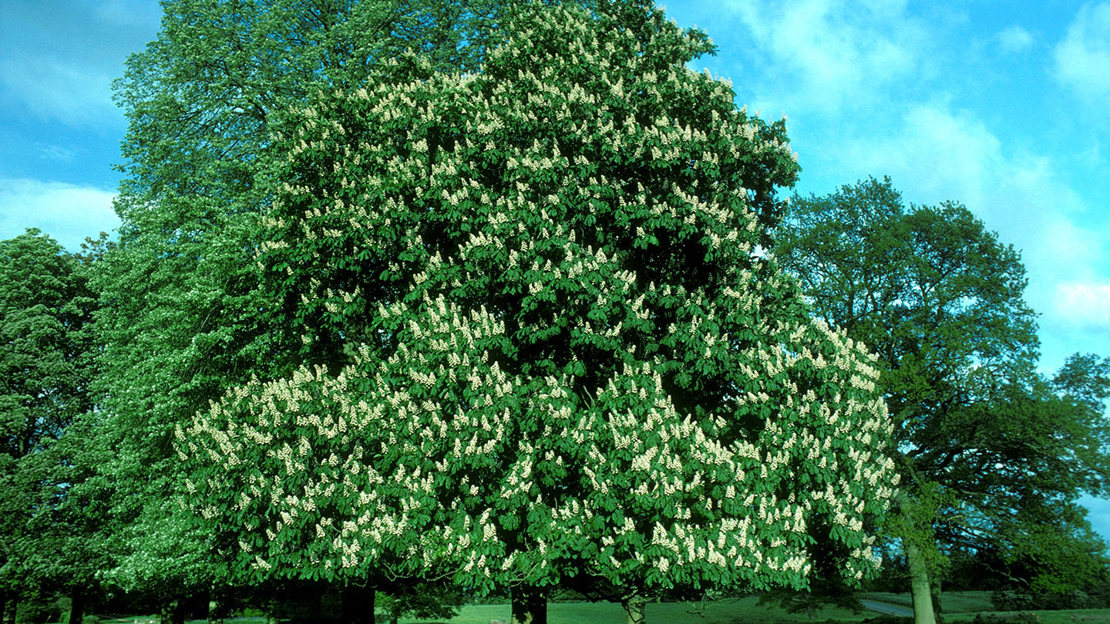
The leaf stalks leave a scar on the twig when they fall, which resembles an inverted horse shoe with nail holes. This association with horses could explain why conkers used to be ground up and fed to horses to relieve them of coughs, and could be the origin of the tree's name.
The most famous use of horse chestnut is in the game of conkers. The first record of the game is from the Isle of Wight in 1848.
Horse chestnut timber is a pale creamy-white to light brown, with a smooth, soft, fine texture. It's not very strong and is therefore not used commercially, but its soft texture makes it ideal for carving.
Other uses of the conkers include horse medicines, as additives in shampoos, and as a starch substitute. Chemicals extracted from conkers can be used to treat strains and bruises. There’s hearsay that if you place conkers around your house it will keep spiders away, but there’s no scientific proof that this is the case.
The Victorians wrote recipes for making conker flour. The seeds were shelled, ground and then leached to remove bitter flavours. It’s not a common practise these days and if consumed in excessive quantities conkers are mildly poisonous.
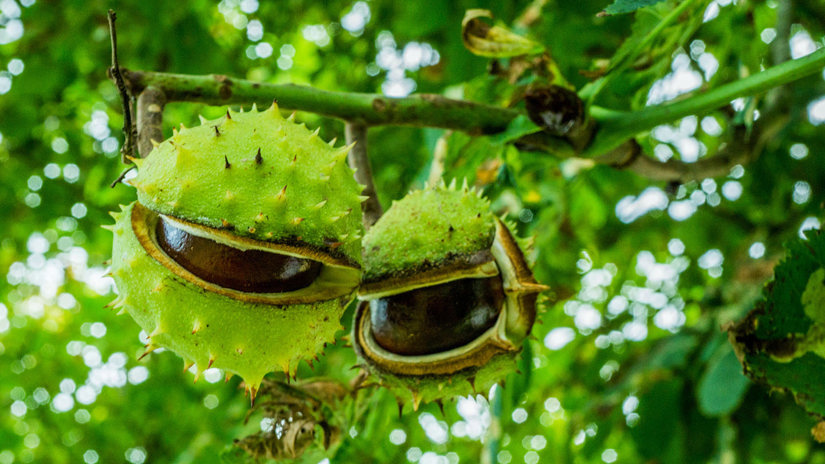
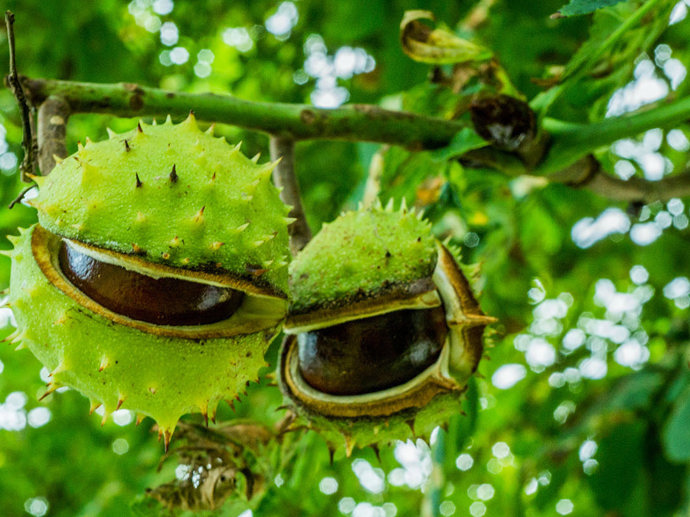
Rachel Hoskins • 30 Aug 2019
Do conkers keep spiders away? Do they deter moths? Can you eat conkers? Check out our top six facts and debunked myths.
Horse chestnut has been found to be susceptible to fungal diseases. Trees can also be affected by bleeding canker, which can lead to their death.
The horse chestnut leaf miner can occur on trees in huge numbers, causing the foliage to turn brown and fall early. There is no evidence to suggest that this harms the tree, as most of the damage occurs late in the season, but it does affect its appearance.
Horse chestnuts may also suffer from a horse chestnut scale insect and Guignardia, which is a genus of fungi that causes leaf blotch.